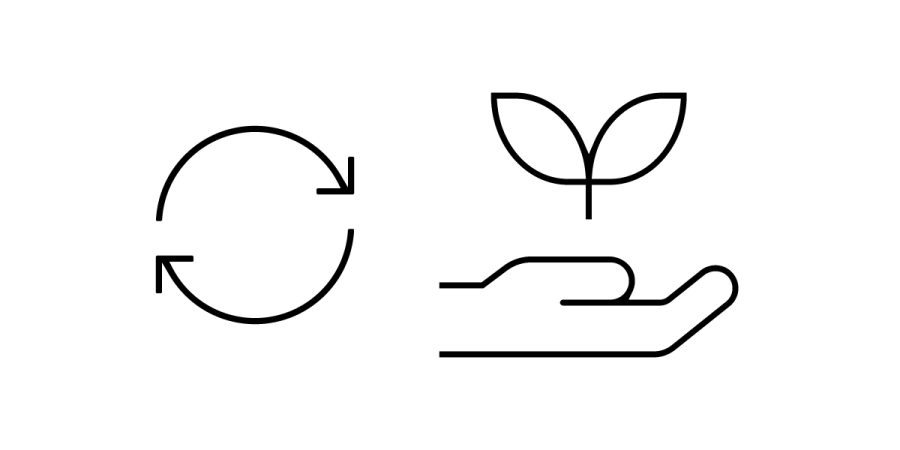An Architect is expected to balance cost, function, time, and aesthetics of a project. In the past, there was never much thought to the sustainability of building materials, however, this has obviously changed and sustainability is an important aspect of the building design that must be considered.
The key point to remember in any design, is that sustainability is the most overused and abused word thrown around by today’s Architects– many simply using it as a marketing tool. Its imperative for the designer to understand what sustainability truly means, and to allow that idea to infiltrate different areas of the project in all decisions
Criteria For Evaluating Building Materials
Asking 100 different architects what a ‘sustainable’ design is, you’ll get 100 different answers. While this will always be true— and one of the reasons a client needs to carefully evaluate whether the Architect is the right Architect for them— there are tangible various ways and approaches to quantify and evaluate building materials from a sustainability aspect.
Quantify & Evaluate
Embodied Energy
Is the total energy included to extract the material, transport the material, process, manufacture, and deliver the finished product. This thought has led many to say that regardless of everything else, ‘the most sustainable building is one that is already built’. There is a high prevalence and importance given to existing buildings and adaptive reuse in rating agencies because of this fact. It is always better to re-use what is already there.
Renewable Materials
A product is renewable if it can renew itself within a relatively short period of time. The easiest example of this would be a product like bamboo or wood, where the product itself can regrow naturally. Note that to be a renewable material, it doesn’t need to be able to be harvested without damage, it just needs to be able to be renewed within a short period of time. With proper management of forestry for example, certain wood species meet this definition.
- LEED credits are given for using rapidly renewable building materials and products for at least 5% of the total value of all building materials. This includes products made from plants that are harvested within a cycle of 10 years or shorter.
- Examples: Wool carpets, bamboo flooring, paneling, straw board, cotton batt insulation, poplar oriented strand board, sunflower seed board, wheatgrass cabinetry.
Recycled Content
The more recycled content a material contains, the less raw materials are required to process the building product.
- Also known sometimes as: Post-consumer materials, post-industrial materials, recovered materials
- Note that in many cases, recycled materials require more energy; to process, clean, and then reproduce the material — when compared to a material of similar use/purpose but made from new materials. This is generally accepted as it keeps materials out of landfills and doesn’t require input of new materials, which is always a goal and a good trade-off, despite the energy requirements.
Local Materials
An aspect to every material or product is the requirement to get that material to the site. The energy requirement for this is a non-negligible value that contributes to a materials energy footprint. As local materials generally have been found to work better with local vernacular as well as climates, this tends to be a win/win approach for most projects.
- LEED credits are given for local materials
- A great example of this is bricks. As masonry is a heavy material, it was not feasible to transport it across the country. Therefore, over 500 brick manufacturers popped up across the country. These bricks had their names stamped into the clay, as a mark for where they came from. Now, much of the brick fabrication has been reduced to a few factories.
Toxicity of Materials
As we’ve become more intelligent when it comes to chemicals and material sciences, certain things have become clear. Certain compounds are extremely unhealthy for us, which can cause permanent and lasting damage. The best definitions of sustainability also include thoughts for the health of occupants, beyond just a building that will last long and is cheap energy wise.
- High Toxicity materials should not be used. These are materials that can emit harmful gases
- Including Chlorofluorocarbons (CFCs), formaldehyde, and others listed on the EPAs website.
- See a more detailed list here
Durability and Maintainability (Maintenance)
Any material installed should have the lifespan of the material at the forefront of considerations. A material with a slightly more negative carbon footprint, can easily outweigh another if it is able to last twice as long. This considers not just the durability of the material, but also how long it can stay relevant from an aesthetic and cultural viewpoint.
- Materials should be able to be cleaned without needing special chemicals. Cleaning is possible with non-toxic or low-VOC substances.
- Moisture: Materials that are resistant to mold and moisture growth should be used, especially in areas of concern. For example, using mold resistant drywall in below grade locations.
- Extendability: Materials that may be past their life but are given the attention needed
Reyclability
Some materials are much more easily recycled into other products than others. This goes beyond just the material and considerations should be given for the fastening and detailing methods of the assemblies.
- Upcycle: The material can become ‘more’ useful as another building product. Steel structure melted down and re-extruded or cast into another shape.
- Recycle: The material can be reused as the same product with a similar usefulness/performance (wood being sanded and re-stained). Generally, most people think of upcycle and recycle the same.
- Downcycle: The material is converted to another product that prevents it from being used as the original product ever again (for example, wood being converted to woodchips).
- For example: Steel is very easy to recycle whereas plastics are hard to fully recycle.
Salvaged Materials
Materials that were used/part of another building or space prior to incorporation into the current design. A special subsection within recyclability.
- Salvaged materials keep that material/product out of the landfill and should be used whenever possible.
- Sometimes local code may not allow re-using of certain materials. Especially those dependent on life and safety or pose a fire risk.
- There may be additional costs to salvage and prep the material, but they can sometimes be cheaper than new materials, combined with the expense of having to discard the other material.
- Note: Reusing certain materials like brick, wood, etc. can add to the aesthetic appeal and character of new buildings. Additionally, it gives the designer the opportunity to repurpose materials better suited for their performance. An example is a salvaged exterior stained glass window that may not perform or insulate very well, can become an interior partition instead.
Energy Efficiency
Materials and products should be chosen to reduce the energy consumption in a building. Often, this unfortunately means higher cost for products that have higher efficiencies.
- For example, using triple pane windows instead of single pane or double pane.
- Water conservation: Products should reduce water consumption.
- Low flow plumbing fixtures
- Drip irrigation with a smart sensor system vs using sprinklers.
Material Sustainability
Every different material has advantages and disadvantages to its use. It’s critical the Architect keep these general observations as guidelines when deciding what direction to take a project, given its constraints.
Concrete
Concrete is often not considered a sustainable material due to the energy and raw material consumption required to produce Portland cement (and the associated emissions and embodied energy). However, if properly constructed and designed, concrete can provide many environmental advantages like heat storage capabilities, no emissions, and long life.
Advantages
- Extremely long life
- Lower embodied energy than steel
- Recycling possible (crushed aggregate can be used for highway fill for example)
- Reinforcing steel rebar can be recycled indefinitely
- Heat storage capabilities (thermal mass)
- Additives such as fly ash and other recycled aggregates make the concrete much more sustainable. These additives are continuing to develop and increase the likelihood that concrete will continually become more sustainable years from now.
Disadvantages
- Initial embodied energy and emissions is rather high to construct
- Additives in the concrete can cause emissions and produce
- Odors & dust for the local environment
- Formwork has a large energy cost as well as lifespan, it cannot be reused indefinitely.
- Concrete can be difficult to fix if done incorrectly and there are a multitude of problems you can encounter. Many times the work will need to be ripped out and replaced.
Design Considerations
- Design building forms to be similar to allow low-waste formwork, which helps reduce waste during the construction process. This also allows similar forms (beams, columns, walls, etc) to be re-used as much as possible.
- Using additives such as fly-ash and other recycled aggregates make the concrete mix much more sustainable and decrease the volume of cement needed.
- Rigid plastic foam forms that remain in place after the concrete is poured have the additional advantage of improving the thermal resistance of foundation walls.
- Autoclaved aerated concrete (AAC) is a lightweight, precast concrete made with aluminum powder as an extra ingredient. This type of concrete is made in molds, cured in steam, then blocks are formed and can be worked easily with wood-working tools. Excellent insulation value, low air infiltration and good acoustical qualities (and needs less cement).
- Generally design and work with structural engineers to reduce the overall amount of concrete needed to a reasonable amount.
Masonry
As with concrete; masonry and mortar require a large amount of raw material and embodied energy. This holds true whether they are clay (bricks) or concrete based (CMUs).
Advantages
- Long life.
- No emissions once placed.
- Great thermal mass abilities.
- Fairly easy to recycle many of the components.
- No toxic production once placed in landfills.
Disadvantages
- Initial embodied energy and emissions is rather high to construct.
- High labor cost, so typically not as feasible in high labor cost markets.
- Requires a level of skill/talent that is beyond what is needed in other areas.
Design Considerations
- Due to its ‘kit of parts’ — the pieces can be designed with many different aesthetics (colors) and layouts.
- CMU is generally made local or near the site and can reduce transportation costs.
- Using local quarried brick can additionally reduce the transportation costs (and emissions).
Metals (Steel)
Metals typically have a very high embodied energy, however, they are some of the easiest materials to recycle. Steel with a recycled content of 30% or more is readily available and most structural steel can be infinitely recycled. Many times you are able to find companies willing to pay for the opportunity to recycle the metals.
Advantages
- High potential for being recycled
- Materials with high recycled content are available in the marketplace
- Extremely good strength to weight ratios.
- Less prep work is needed (no formwork for structural steel for example).
Disadvantages
- Very high embodied energy to produce
- Metals that are plated or coated with chemicals can present problems, especially with recycling.
- The electroplating processes produce high levels of pollution and by-products.
Wood
Wood is used for a variety of finishes, products, and internal structural framing for smaller to mid scale buildings– its uses are almost limitless. This includes soft and hardwoods from domestic and international sources. Wood is primarily one of the easiest to work with materials, with wood working tools being readily available in all consumer markets.
Advantages
- Reclaimed wood has an aesthetic appeal of being worn
- Reclaimed wood allows the architect to use wood that is no longer available like the American Chestnut
- Reclaimed wood is generally harder and more mature, also less likely to split or warp than new growth
- Engineered wood is structurally stable and predictable – uses for structural applications are limitless.
- Mass Timber is being widely recognized as a sustainable and fast building typology.
Disadvantages
- Potential for deforestation
- Low strength to weight ratio (Members are oversized compared to steel).
Design Considerations
Deforestation used to be a larger problem than it is today, with regularly available certified wood and forestry practices across developed regions that aim to combat this. It is still on the Architect to help solve these problems by using strategies to combat it. Such as:
- Using reclaimed wood wherever possible.
- Timber salvaged from demolished buildings or structures that gets prepared for a new use.
- Typical preparation: removing nails, drying, cutting, planing.
- Specifying sustainable wood or alternatives
- Engineered products may require less material to be used due to their predictability.
- Bamboos and other materials are faster growing and can replenish themselves quicker than wood.
- Straw particle board: uses wheat straw, a waste product from farming.
- MDF and other particleboards are good materials so long as they don’t use resins that emit toxic gases (there are formaldehyde-free MDF materials)
- LEED credits are available for using low-emitting materials that contain no added urea-formaldehyde resins
- Wood veneers are available in many finishes. These veneers use less of the exotic wood compared to a full panel/board of the species.
- Using certified wood products
- Most commonly known is the Forest Stewardship Council (FSC). Accredits organizations that complies with its principles.
- LEED credits are available for using products that comply with approved extraction practices (FSC Complies)
- Benefits are given for products sourced within 100 miles of the site.
Plastic / Resins / Composites
Plastic consumer products and building materials are constantly being invented and brought to the market. Many of these are for specific applications such as cladding, window frames, or decking materials. Due to their inorganic quality, they are required to be fabricated and typically have predictable qualities to them such as fire retardant or thermal considerations.
Advantages
- Predictable qualities for each manufactured product/material.
- Easy to order and easy to customize with different aesthetics. Many manufacturers have multitude of colors and textures.
- Many are easy to incorporate recycled material into, such as rubber or glass.
Disadvantages
- Plastic is a very difficult product to use in a major way on buildings due to its aesthetics and inherent ‘cheap’ societal feeling & quality to it.
- Many plastic products will get brittle or break down due to long term UV and weather exposure.
- In order to make plastics have more longevity, resins and other components are added to create stronger polymers and composites. This increases the energy and processing needed for the material.
- Plastics and resins do not occur naturally, so a facility or plant (manufacturing capability) is required. Compared to wood where sites all over the world have a variety of species.
Design Considerations
However, it is not suitable for load-bearing applications.
Compostable plastics are available, however, they are generally not used for building materials. Additionally they need to be sorted and processed at a commercial compost center.
BioPlastics: Biodegradable plastics.
Polylactide (PLA): A bioplastic made from harvested corn – currently in the manufacturing of carpet fibers.
Plastic-wood: Plastic composite mixed with wood fibers.
Plastic-wood can provide a great alternative to needing to use pressure treated wood (which contains CCA Chromated Copper Arsenate)
Plastic wood will not rot, won’t crack or absorb water, and can be worked with normal wood working tools. Comes in a variety of colors, commonly used for things like decking.






Leave a Reply
You must be logged in to post a comment.